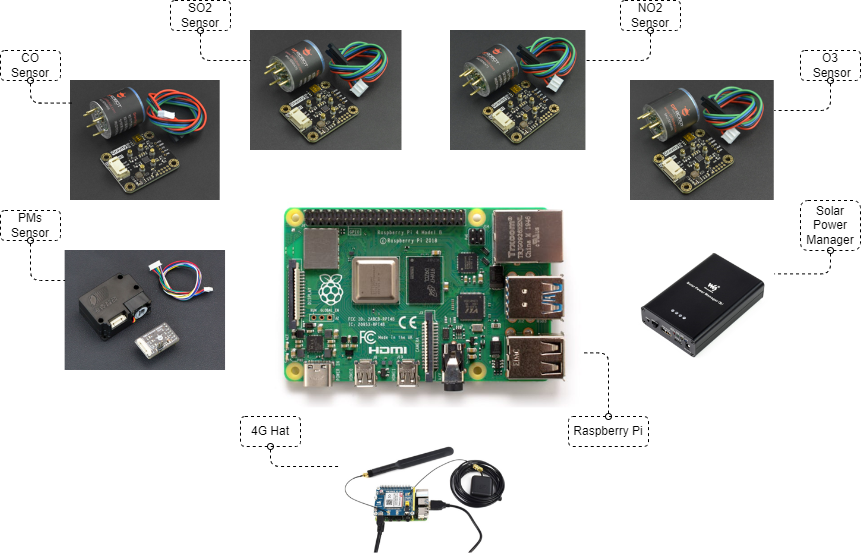Health Impact Assessment
Health Impact Assessment (DSS – HIA)
The Health Impact Assessment component is a part of the SILVANUS project framework that reflects the potential impact of wildfire emissions on air quality and health of fire fighters, first responders and nearby citizens.
Through the ongoing monitoring of emission levels in the field while exploiting the medical knowledge provided by experts and the estimation of the air quality index, this component facilitates efficient decision-making processes and notifications concerning the well-being and security of those present in the impacted area. Leveraging a collaborative network consisting of mobile and stationary Internet of Things (IoT) devices equipped with gas sensors this component seamlessly monitors the concentrations of harmful emissions (i.e., Particulate Matter of diameter 2.5 µm – PM2.5, Particulate Matter of diameter 10 µm – PM10, Ozone – O3, Nitrogen Dioxide – NO2 and Sulfur Dioxide – SO2). Then, it defines the local air quality surrounding the fire incident by adhering to the European Air Quality Index standards and offers health recommendations both to general and sensitive populations.
In addition, this component formulates a list of relative risk indicators. These indicators demonstrate the ratio of the probability of an adverse outcome in a group exposed for short or long periods of time to the emissions of fire, divided by its probability in an unexposed group. Illustrative examples are the percentage increase in the mean number of deaths derived from the short- and long-term exposure to PM2.5 and hospital admissions for respiratory diseases due to short-term exposure to NO2.
The produced information is available to stakeholders through the DSS and appropriate RESTful APIs.
The building blocks of the portable IoT device adopted are presented in detail in the following figure.
